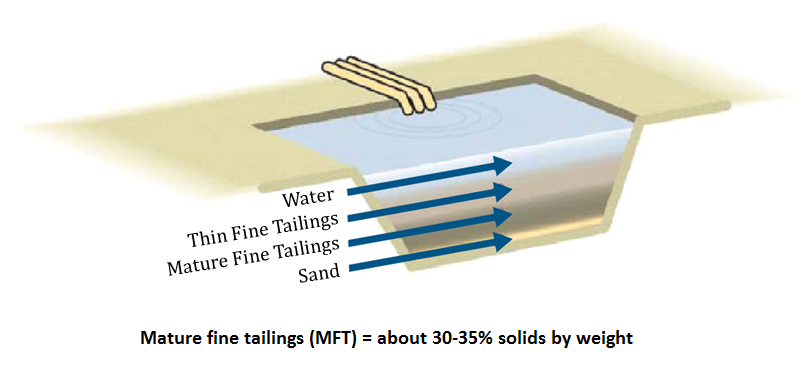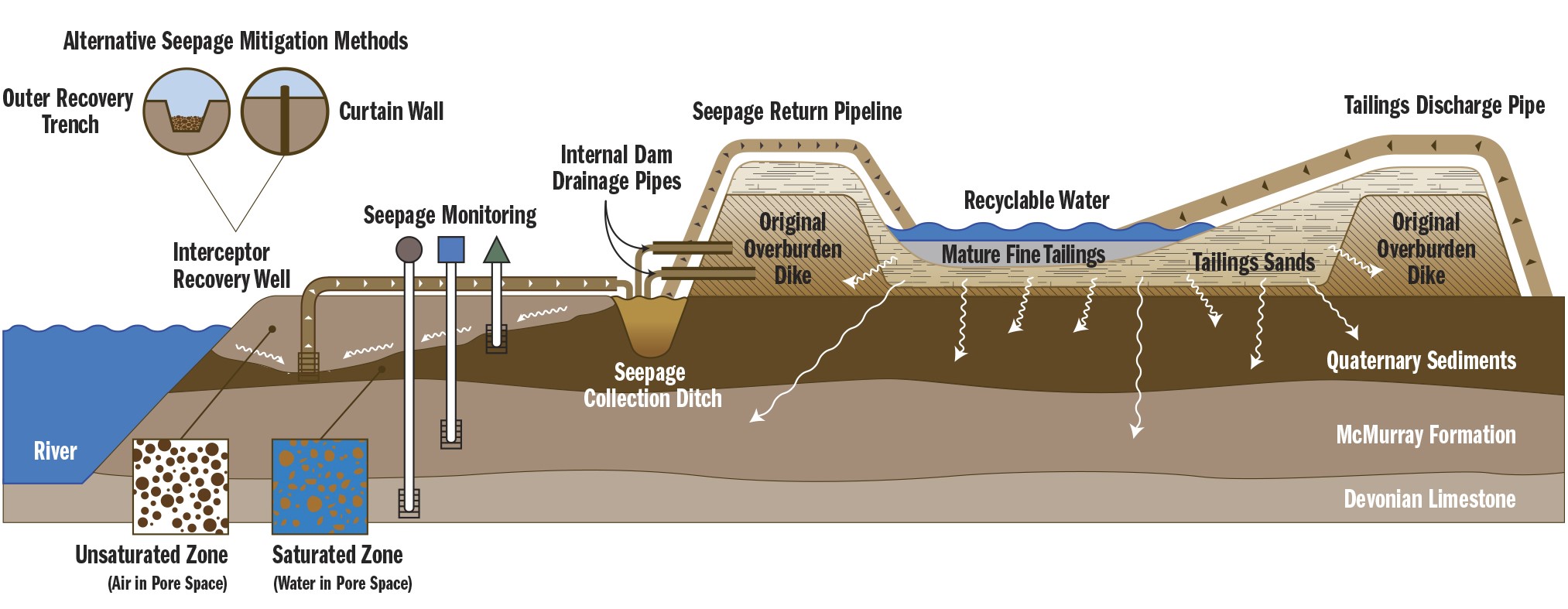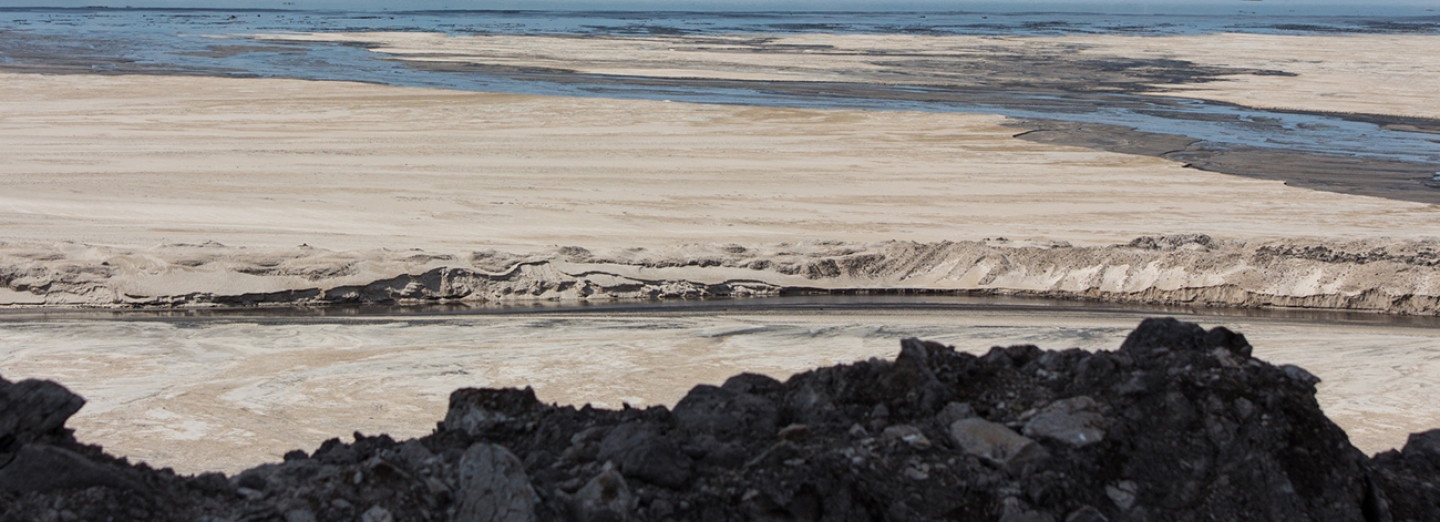A large part of Alberta’s energy development is mining the naturally occurring oil sands – a mixture of sand, clay and other minerals, water, and bitumen. Alberta’s oil sands lie beneath 142 200 square kilometres of land in the Athabasca, Cold Lake, and Peace River regions of northern Alberta and are the fourth largest proven crude oil reserves in the world after Venezuela, Saudi Arabia, and Iran.
What are Tailings and Tailings Ponds?
Extracting bitumen from oil sands by open-pit oil sands mining produces a waste product known as tailings. The yearly volume of tailings produced at an oil sands mine varies depending on the quality of the oil sands mined, the processes and technologies used to produce bitumen and treat tailings, and other factors.
Tailings ponds are large, engineered structures that store tailings and process-affected water. Operators are required to contain process-affected water from oil sands mining in tailings ponds. Release of process-affected water to the environment is prohibited.
Tailings ponds allow large particles, such as sand, to settle out. The time needed for tailings to settle depends on its composition. Once in the pond, the larger particles will move through the fluid and settle on the pond’s bottom, while finer particles of clay and silt (referred to as thin fine tailings) remain suspended in the water. Thin fine tailings can take decades to settle, and even then, only to a consistency of soft mud (referred to as mature fine tailings).
As particles settle, the water in the tailings pond is recycled back to the extraction process, reducing the need for fresh water.


History of Tailings Management
Tailings ponds can operate for decades and take time to be reclaimed. We continue to work with companies and the Government of Alberta to find new and innovative ways to reduce tailings. See a timeline of events that have shaped tailings management in Alberta.
Shared Responsibility for Tailings Management
Tailings management is a shared responsibility. The Government of Alberta, the Alberta Energy Regulator, energy producers, and the Government of Canada work together to ensure effective tailings management. All parties are responsible to all airshed and watershed residents and water users, including downstream users.
In addition, the Government of Alberta has the Mackenzie River Basin Bilateral Water Management Agreement with the Government of the Northwest Territories. The bilateral agreement signed in 2015 demonstrates government commitments to proactive long-term water management and collaboration. This agreement sets water quality and quantity, aquatic life monitoring, and other monitoring commitments.
Organizations such as Alberta Innovates, Canada’s Oil Sands Innovation Alliance, and Pathways Alliance are involved in furthering research, technology, and innovation for tailings management. Innovative solutions will help reduce or resolve effects on the land and biodiversity from oil sands mining tailings.
Tailings reports from previous years are available on the Product Catalogue webpage.


